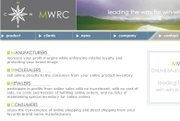Mediating 'Channel Conflict'
Manufacturers who take the plunge and sell directly to consumers online inevitably encounter a phenomenon that has been called “channel conflict,” or “resistance and resentment,” from their distribution channels—the retailers.
But, especially with the rise of Internet commerce, diminishing the need for intermediaries has lured many manufacturers into projects they cannot effectively manage. Brand building, advertising, customer service, order processing and fulfillment are among the functions that most retailers have mastered. Without the retailer, the need to manage these functions does not go away.
At the other end of the spectrum is the conservative retailer/loyal manufacturer who will create a Web presence that exclusively promotes its retailers with features such as “store finders” and offer no direct product sales online. The Internet channel just promotes the established stores.
Many insist that somewhere in between, an amicable balance is possible that simultaneously rewards both the manufacturer and the retailer.
Sound too good to be true? There’s at least one innovator and source for just such a solution. It’s offered by Redondo Beach, Calif.–based MWRC Internet Sales, LLC (www.mwrc.net) and, says National Sales and Accounts Manager Jeff Miller, “[This] e-commerce solution is perfect for the apparel industry.”
Russ Lesser, president of Body Glove International (www.bodyglove.com) also based in Redondo Beach, said: “We wanted to get into e-commerce without damaging long-standing retail relationships. The MWRC system solved that problem.
We are now able to sell to new consumers in new parts of the country while supporting our 53 years of bricks-andmortar retailer relationships. The MWRC solution is great for us, our retailers and our industry in general.”
MWRC (which stands for Manufacturers, Wholesalers, Retailers, Consumers) has developed a Web-based solution called the MWRC Online Sales Coordinator. The Online Sales Coordinator consists of a Web-based administrative back end and product- catalog/shopping-cart consumer front end designed to enable brand-name companies to sell their products over the Internet with the inclusion of their dealers in the profits.
How does the software work for Body Glove? The answer is apparent in the unique, patent-pending MWRC system as the customer seamlessly enters the shopping cart of the manufacturer’s Web site. It looks like most other shopping carts but functions quite differently.
The consumer selects a product from the manufacturer’s online store, enters his or her ZIP code and is then given a choice of the five closest retailers authorized to be on the system. When the consumer picks a retailer, that retailer receives a commission on the sale. The item is shipped from the manufacturer directly to the customer. The consumer may, of course, elect to go to the nearest store instead, but the online option in many instances offers far more SKUs than a single store can stock.
The retailer receives revenues with no cost of sale. But to earn the benefits of the MWRC system, the retailer must be a loyal, authorized dealer who continues to support the brand (and the Web site) in-store.
With online sales channels accounting for 27 percent of total budgets for consumers during Holiday 2005 (and apparel achieving the No. 1 product category for the first time), it would appear that MWRC’s win/win system may signal an end to “channel conflict” and the beginning of a path to greater profits for both manufacturers and retailers.
The Everything-Denim Site
The continuing consumer interest in all things denim has created a demand for information about the fabric and its various manifestations. The history of denim alone is interesting enough to warrant a visit to Jeans-and-Accessories.com, a well-developed Web site that comes out of Santa Rosa, Calif. The site also features sections on Sizes, Styles, Vintage, Embellished, Body Types and a very active blog.
A few ads by Google are served on each page, but sales takes a back seat to providing information such as the difference between cut, fit, styles, washes and fashion trends in the designer denim industry.
Graphically, the site is adequate, with the appearance and functionality of one of those template-generated Microsoft FrontPage sites. It’s not exactly unique custom design, but it’s also nothing to complain about. For advanced Web users, there’s RSS (Really Simple Syndication) as an automated news feed that keeps subscribers up-to-date on information as it’s added, rather than the user having to continually check back to the site. A special RSS reader (software) must be installed to implement this feature, but it provides a nifty and quite useful service to any serious denim aficionado.























